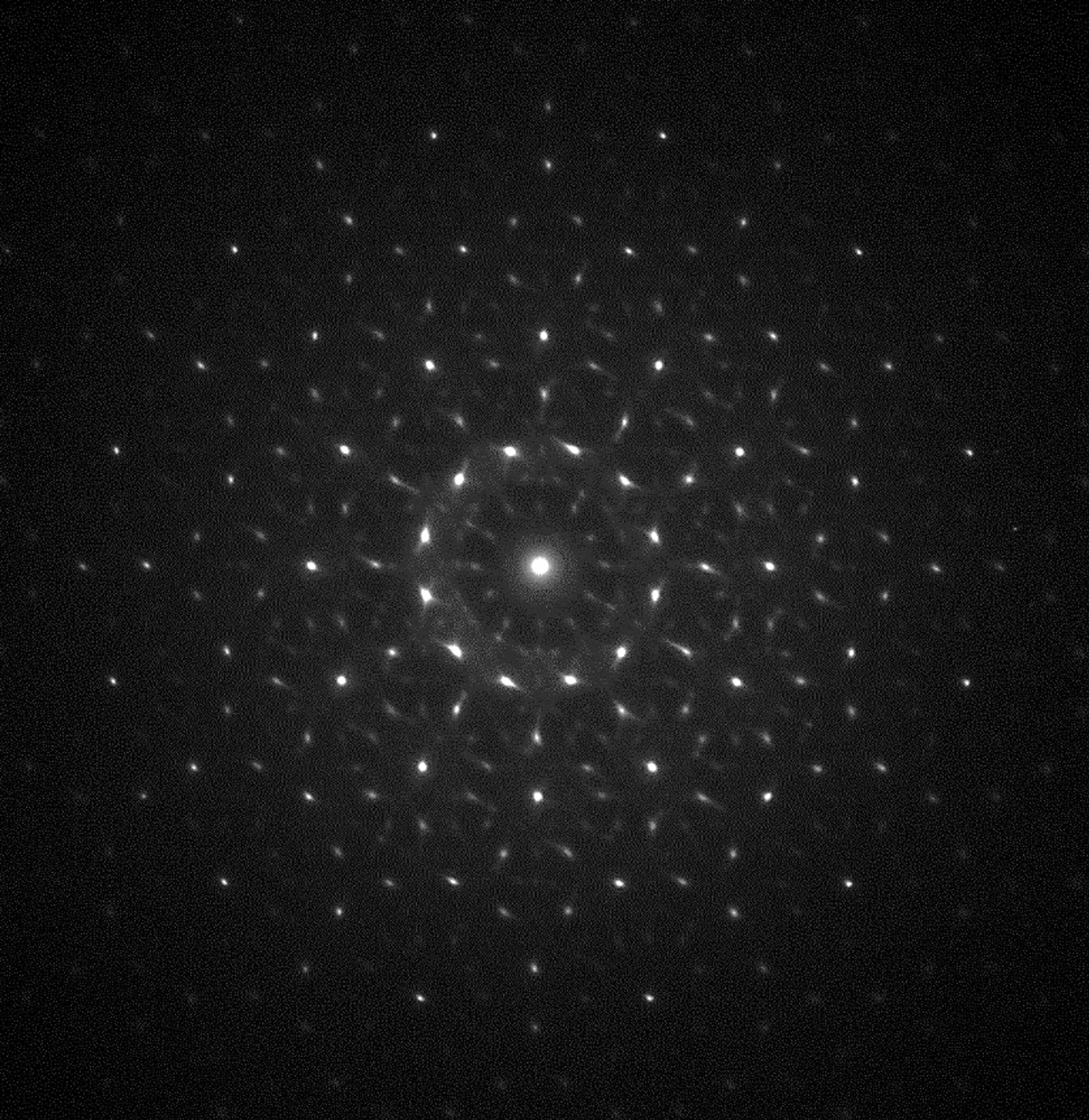A new type of quasicrystal, one with 12-fold symmetry, has been discovered in a very unexpected place, leading geologists and mathematicians to wonder where else structures like this might have been overlooked.
Quasicrystals (or quasiperiodic crystals) are structures of atoms that lack translational symmetry but are symmetric in other ways outside the rotational symmetries of true crystals. After first being synthesized in 1984 and found naturally in 2009 we may just be scratching the surface of the processes that can form quasicrystals.
The currently unnamed quasicrystal was found inside a sample of fulgurite formed from sand and metal from a downed powerline heated to at least 1,710°C (3,110°F). The chemical composition and structure of the crystal are reported in a new paper, however, the authors don’t know if the energy required to make it came from a lightning strike, or the electricity the line once carried.
True crystals are highly ordered structures that show both rotational and translational symmetry: you get exactly the same thing if you either turn them by a certain number of degrees or shift everything sideways by specific amounts. This allows the cells that compose the crystal to stack perfectly without gaps; it has been proven only 2, 3, 4, and 6-fold symmetries are possible.
The discovery of aperiodic tilings proved it was possible to fill two-dimensional spaces with rotational but not translational symmetry, as these shapes never perfectly repeat. This led to the prediction, and subsequent production, of three-dimensional forms with the same characteristics. The discovery of icosaherdrite proved such structures could even form naturally, and a range of surprising symmetries have been revealed.
Quasicrystals with five, eight, 10, and 12-fold symmetries have been made in laboratories and found in carbonaceous chondrite meteorites and at the sites of nuclear tests, winning the 2011 Chemistry Nobel Prize. Quasicrystals have been made into non-stick frypans and proposed for surgical instruments, thanks to their exceptional hardness.

The diffraction pattern produced by a quasicrystal with 12-fold symmetry like the one newly found from an electrical discharge. Image Credit: Luca Bindi et al., PNAS, 2022
Nuclear bombs and meteor strikes are emblematic of extreme conditions, leaving open the question of whether quasicrystals can form naturally in more placid environments. Lightning strikes are not exactly tranquil, but everything is relative, so the finding of a quasicrystal near Hyannis, Nebraska, widens the list of possibilities for quasicrystal formation at least a little.
The fulgurite in which the quasicrystal was found is about 2 meters (7 feet) long but never more than 8 centimeters (3.2 inches) across. It also contains a regular crystal composed of the same five elements as the quasicrystal – manganese, silicon, nickel, chromium, and aluminum – in different abundances.
Both the manganese and the aluminum are thought to come from the powerline, with the other elements being present in the local sand.
The 12-fold symmetry (known as dodecagonal) means every 30-degree rotation brings the quasicrystal to the same state. This occurs for each of the equally spaced atomic layers. Even in lab-made quasicrystals, decagonal (10-fold) symmetry is more common than the dodecagonal type seen here. Besides this exact form of quasicrystal being new, the discovery suggests powerful electrical discharges could be a new tool for quasicrystal formation.
The paper is published in the Proceedings of the National Academy of Sciences
Source Link: Rare Quasicrystal Found Unexpectedly In Nebraska Sand Dune